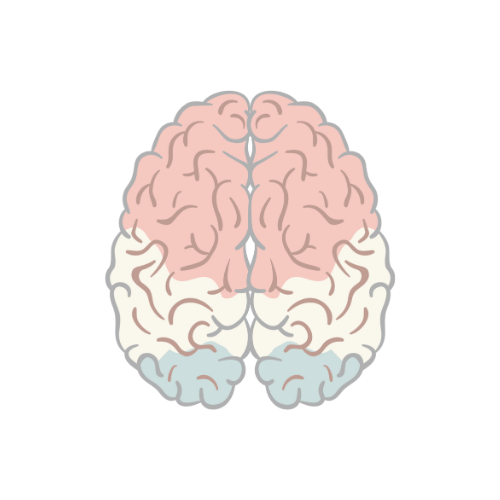Overview
Overview Chronic pancreatitis is characterised by recurrent or persistent abdominal pain arising from the pancreas. The inflammatory process results in irreversible destruction and fibrosis of the pancreas. Often associated with exocrine or endocrine pancreatic insufficiency.
| Definition Acute Pancreatitis: An inflammatory process in which pancreatic enzymes are activated and cause autodigestion of the gland. Chronic Pancreatitis: Irreversible damage causing fibrosis and scarring to the pancreas, resulting in exocrine and endocrine dysfunction Pancreatic pseudocyst: Cystic space within the pancreas not lined by epithelial cells, often associated with chronic pancreatitis. |
Pancreas anatomy and physiology
Pancreatic anatomy Pancreas extends retroperitoneally across posterior abdominal wall. It means “All (pan) Flesh (Kreas)”. The pancreas consists of the following parts:
- Head
- Neck
- Body
- Tail
The head is encircled by duodenum and tail in contact with spleen. Pancreas has a poorly developed capsule & therefore adjacent structures (common bile duct, duodenum, splenic vein, transverse colon) are commonly involved in inflammatory process.
Blood Supply
- Pancreatic branches of the splenic artery
- Superior pancreaticoduodenal artery
- Inferior pancreaticoduodenal artery
Venous drainage
- Drains with the splenic vein → Superior Mesenteric → Portal vein
Nerve invervation
- Parasympathetic → Vagus nerve → Stimulates pancreatic juice secretion
- Sympathetic
Lymphatic drainage
- Head and Neck → Pancreticoduodenal nodes →
- Body and Tail → Pancreaticosplenic nodes →
Embryology
- Fusion of the ventral and doral outpounchings of forgut
Pancreatic physiology exocrine (98%) & endocrine (2%) functions
Exocrine: Pancreatic acinar cells produce digestive enzymes, which are stored in secretory granules. The Pancreatic exocrine secretion is regulated by cephalic, gastric & intestinal stimuli. Acinar cells secrete pancreatic juice made up the enzymes:
- Amylase → Carbohydrate digestion
- Lipase → Lipid digestion after bile has emulsified the fat
- Proteases (MANY!) → Protein digestion
Exocrine section is stimulated by:
- Vagus nerve
- Secretin (hormone)
- Cholecystokinin
Endocrine: Islets of Langerhans – clusters of hormone-producing cells secreted directly into circulation. Endocrine cells of the pancreas:
- Beta cells → Insulin
- Alpha cells → Glucagon
- D cells → Somatostatin.
| Cells of the Pancreas | Secretion | Function |
| Acinar cells secrete enzymes into the duodenum | Nucleases | Breaksdown nucleotides |
| Proteases | Digests Proteins | |
| Lipases | Digests lipids | |
| B-amylase | Digests carbohydrates | |
| Islets of Lagerhan secrete hormones into the bloodstream | Glucagon | Stimulates glucose release into the bloodstream from glucose stores |
| Insulin | Increases cell uptake and storage of glucose |
Risk Factors
| Risk Factors |
| Alcohol |
| Smoking |
| Family history |
| Coeliac disease |
Signs and Symptoms
Clinical Presentation of chronic pancreatitis is similar to acute pancreatitis but less severe. This include epigastric pain that may radiate to the back, nausea and vomiting. Patients may present to ED and require opiates. Pain is worse with food and alcohol. Exocrine features of chronic pancreatitis include weight loss and malnutrition (due to malabsorption of macromolecules) and also steatorrhea (due to fat malabsorption).
Differential Diagnosis
- Pancreatic cancer
- Acute pancreatitis
- Gallstone disease
- Peptic ulcer disease
- Mesenteric Ischemia
- Triple A (AAA)
- Myocardial infarction
- Irritable bowel syndrome
- Nephrolithiasis (kidney stones)
Investigations
- Abdominal – X-ray may show pancreatic calcification
- Abdominal ultrasound – may show cystic changes and duct dilatation within the pancreas.
- Bloods – glucose (to assess pancreatic exocrine function) and serum amylase/lipase (which tend to be normal in chronic pancreatitis)
- Pancreatic CT scan
- ECRP
Aetiology
- Recurrent acute pancreatitis of any cause, especially alcohol
- Secondary to pancreatic ductal obstruction
- Pancreatic head cyst, tumours
- Cystic fibrosis
- Associated with autoimmune disease (primary biliary cirrhosis, primary sclerosing cholangitis)
Pathophysiology
Pathological features
- The process may affect the whole or part of the gland
- The head tends to be the most severely involved part in chronic alcoholic pancreatitis
- Features of acute pancreatitis may be present (fat necrosis, haemorrhage and/or oedema)
- Chronic inflammatory changes include atropy, duct dilation, microcalcification and intraductal stone formation with cystic changes secondary to ductal occlusion.
Management
Management involve prevention of cause/progressive damage by stoping alcohol and smoking. Encourage diet rich in antioxidant. Controlling symptoms and complication involve dietary modification (low fat), pancreatic enzyme supplements, analgesia (may require opiates), insulin (for diabetes if develops). Surgical management includes percutaneous or endoscopic drainage to drain excess fluid in the pancreas that is causing obstruction. Pancreaticduodenectomy is performed to remove possible causes and complications.
Complications and Prognosis
Resectional surgery is associated with increasing risk of exocrine and endocrine pancreatic failure and high risk of complications
Complications
- Pseuodocyst
- Obstruction
- Fistula
- Infections
- Portal hypertension
- Diabetes Mellitus
- Pancreatic calcification
- Opiod addiction
Prognosis
- Generally, pain decreases or disappears over time, regardless of aetiology
- Ten-year survival after diagnosis is 20% to 30% lower than the general population.


Discussion